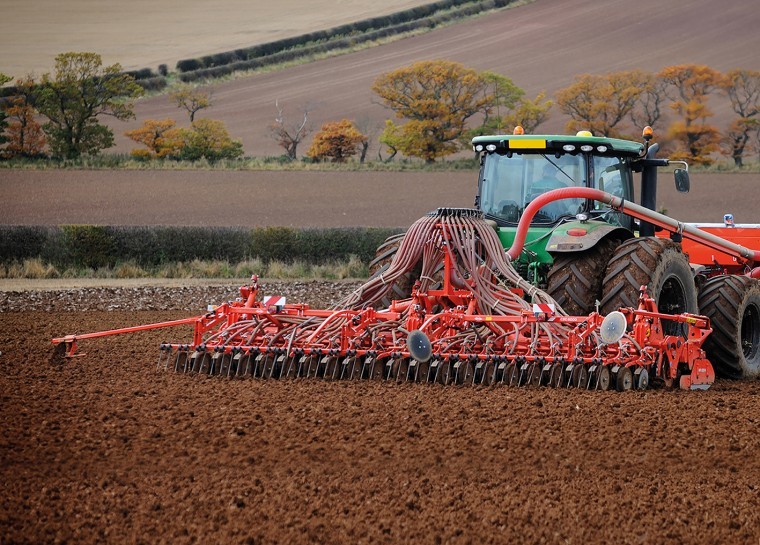Speaking at the launch of the latest ProCam 4Cast results – a crop database that gathers information from around 30,000 ha annually on aspects such as cultivations, drilling date, inputs and yield – ProCam managing director, John Bianchi, said: “Financial sustainability means that individual crops in the rotation need to be profitable, for example by maximising yields and minimising costs of production.
“But it also means that the rotation as a whole is profitable, and that any agronomic challenges are addressed.
“While precision farming helps manage crops at the square metre level, big picture data helps with decision-making at a field or farm level. ProCam 4Cast holds over 500,000 ha of data collected from real farms over multiple seasons. It can be used to analyse trends, inform decisions, and benchmark top-performing farms to help other farms improve.”
Pointing to examples, Mr Bianchi said 2017 results showed the average winter wheat yield for ProCam 4Cast growers, at 9.2 t/ha, was 0.9 t/ha above the Defra average, equating to an extra £135/ha income for grain at £150/t. Better still, the top 25% of ProCam 4Cast growers had an average winter wheat yield of 10.4 t/ha, he added, 2.1 t/ha above the Defra average and equating to an extra £315/ha.
“By increasing efficiency of production, farmers can offset some of the harmful reductions in support payments,” explained Mr Bianchi. “The main prerequisite for improvement is a commitment to attention to detail in every decision.”
ProCam head of crop production, Nick Myers, agreed and said as well as big picture data being valuable for benchmarking yield performance, it can also help when planning profitable rotations, and with shorter-term decisions – for example by showing the impact of drilling date on yield over large numbers of hectares.
“Latest ProCam 4Cast data from harvest 2017 revealed that winter oilseed rape remained the most profitable combinable crop option,” said Mr Myers, “just ahead of winter wheat. But of course this is only part of planning a rotation.
“You also need to look at the impact of the previous crop on the current crop’s yield. We have this information for winter wheat over multiple seasons. But what was also interesting was when we examined the impact of the previous crop on winter oilseed rape yield for the first time this year.
“Growers had reported that winter oilseed rape yields seemed lower after spring barley. When we examined the latest 4Cast data, that was the case. This is important to know, not to get rid of spring barley, which is increasingly grown to counteract blackgrass, but so you can adapt oilseed rape agronomy,” he added.
{in-brief}
Turning to delayed drilling of winter wheat, also important against blackgrass, Mr Myers said, encouragingly, results showed that while average drilling date had shifted from 2 October to 12 October between the harvest seasons of 2011 and 2017, yield hadn’t declined. “The thinking is that any yield penalty from later drilling is offset by crops containing less blackgrass.
“Also, there may be scope for more growers to drill later. While the peak drilling date for the majority of growers was early October, the peak for growers in the top 25% for winter wheat gross margin was after mid-October,” he added.
ProCam seeds and traits technical manager, Mike Thornton, agreed that assessing the impact of delayed drilling on yield is a key benefit of big data.
As well as delayed drilling reducing the risk of blackgrass, he said delaying winter wheat drilling until after the peak aphid activity in autumn also reduces barley yellow dwarf virus risk.
“As growers face up to the loss of neonicotinoid seed treatment chemistry in cereals, this could become an increasingly important strategy for reducing BYDV problems,” said Mr Thornton.
“Once big picture data has been used to decide a particular crop strategy, it’s then important to match agronomy to get the best from the strategy,” he added.
“With later drilling, you need to prepare a good seedbed to get the crop established quickly. You also need a wheat variety that can compensate for later drilling through tillering, or that is flexible with regard to drilling date. Even if the variety might be 1 or 2% lower yielding on paper, you could end up with a better crop.
“Also, select the appropriate seed rate for that drilling date, and look at a seed treatment to protect against diseases that could threaten later crop establishment in colder, wetter soils.
“For weed control, moister soils improve uptake of residual herbicides, while colder soils mean residual herbicides are broken down more slowly so last longer.
“Alternatively, for growers planting oilseed rape after spring barley, its lower yield may be due to the crop going in the ground later or to lower levels of residual nutrients than after winter wheat. So look at using a bio-stimulant or supplementing nutrients in the oilseed rape crop. These are areas we are examining in trials.”




